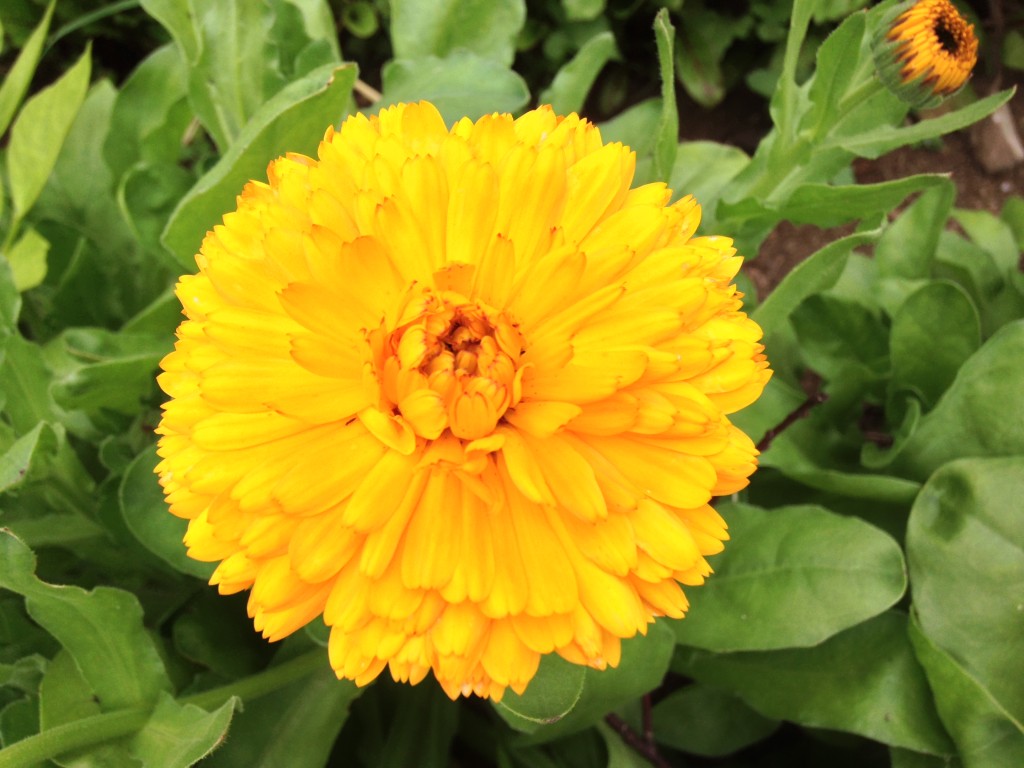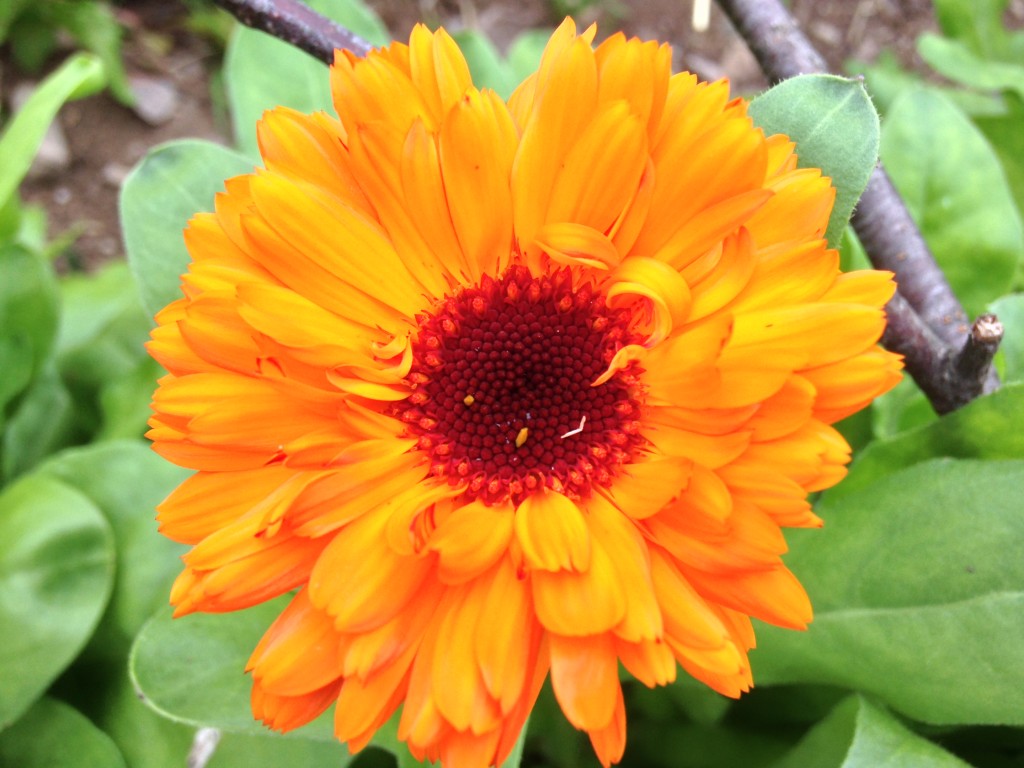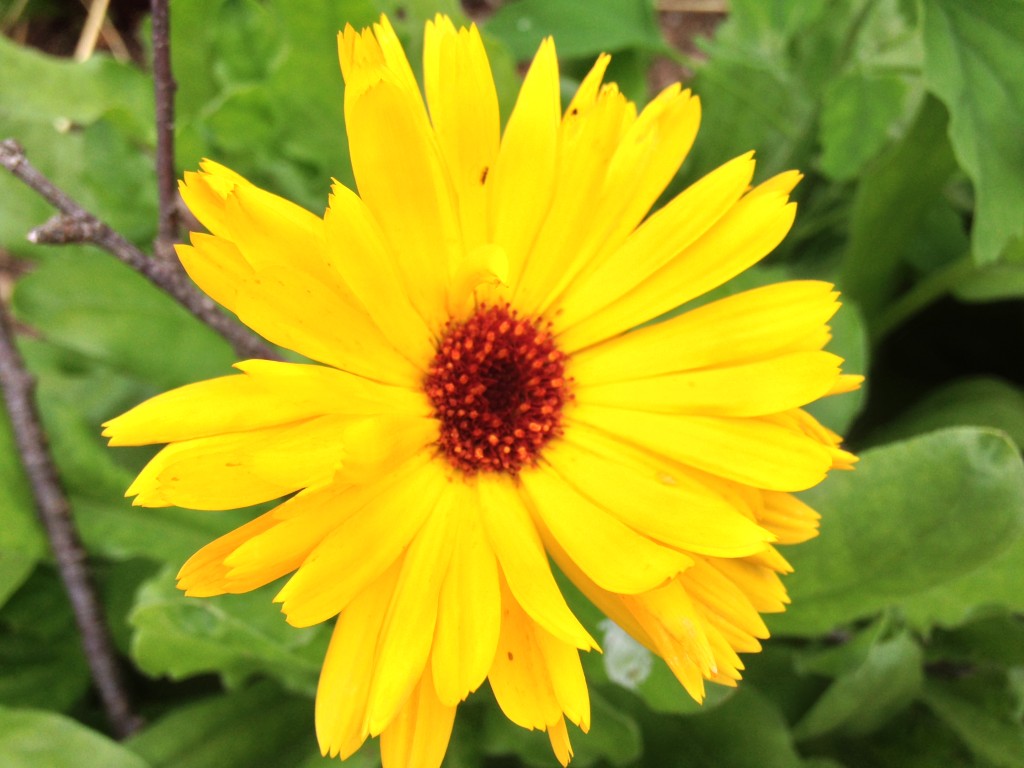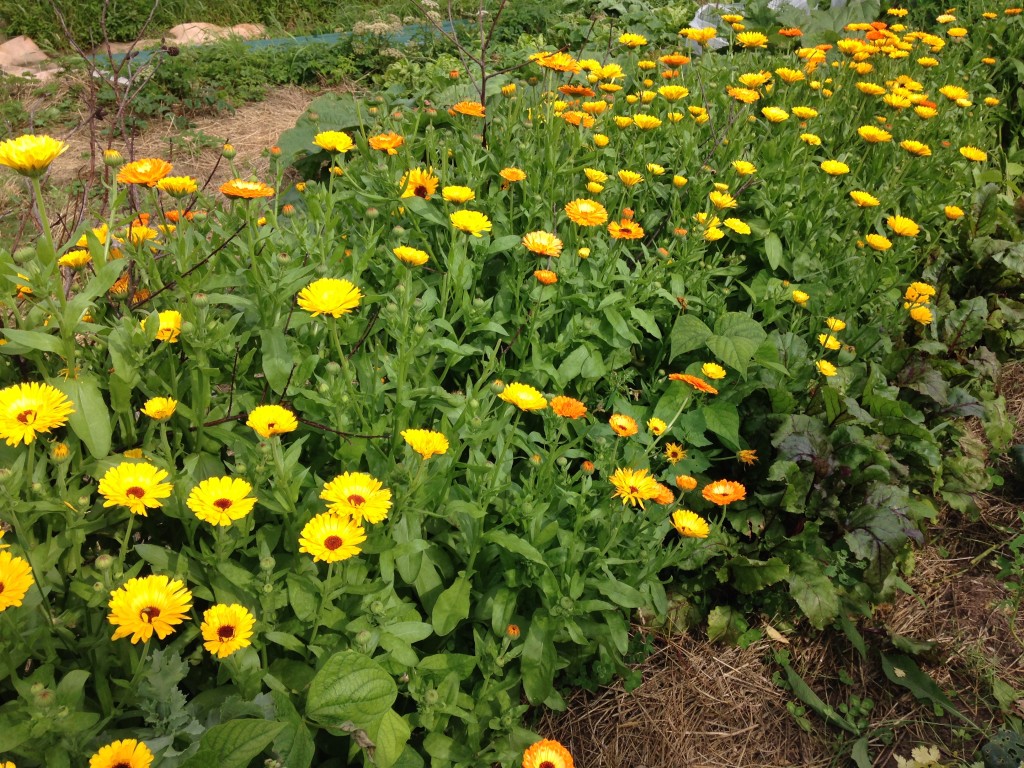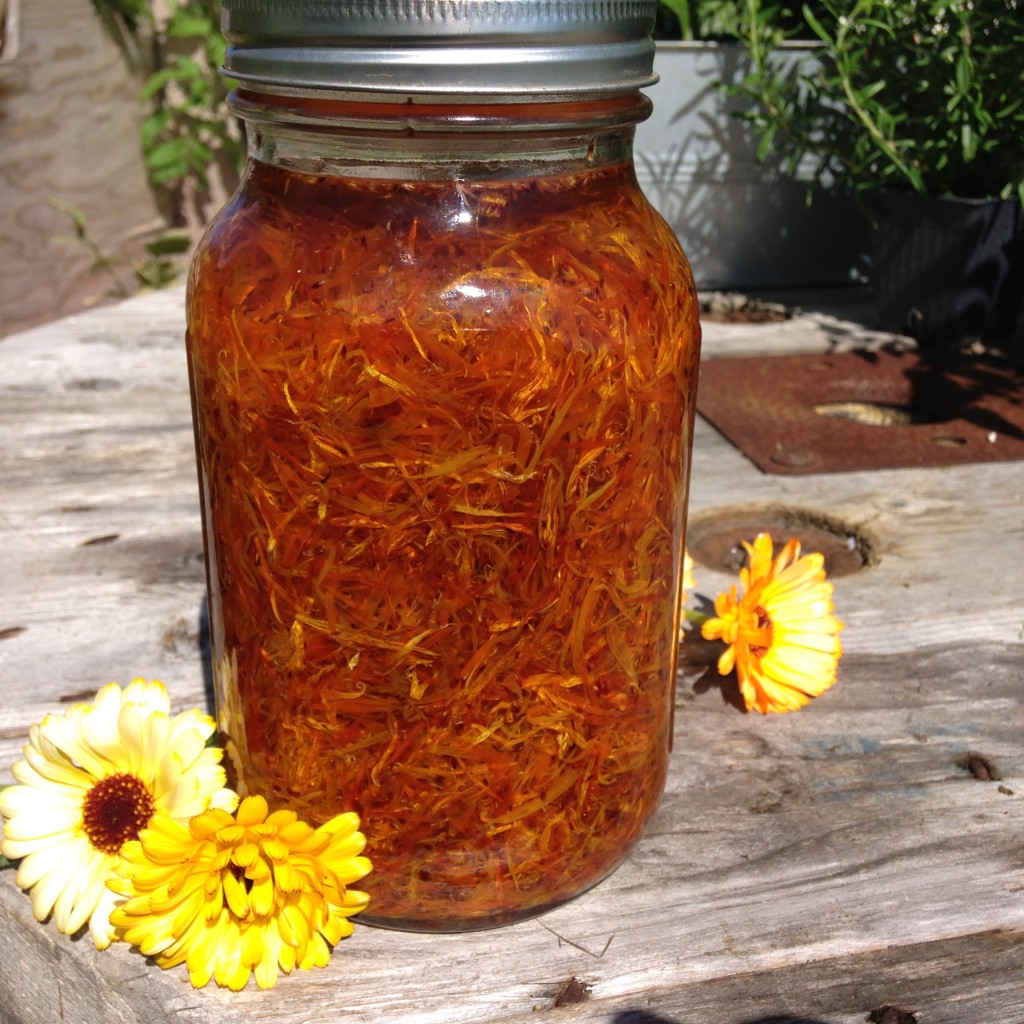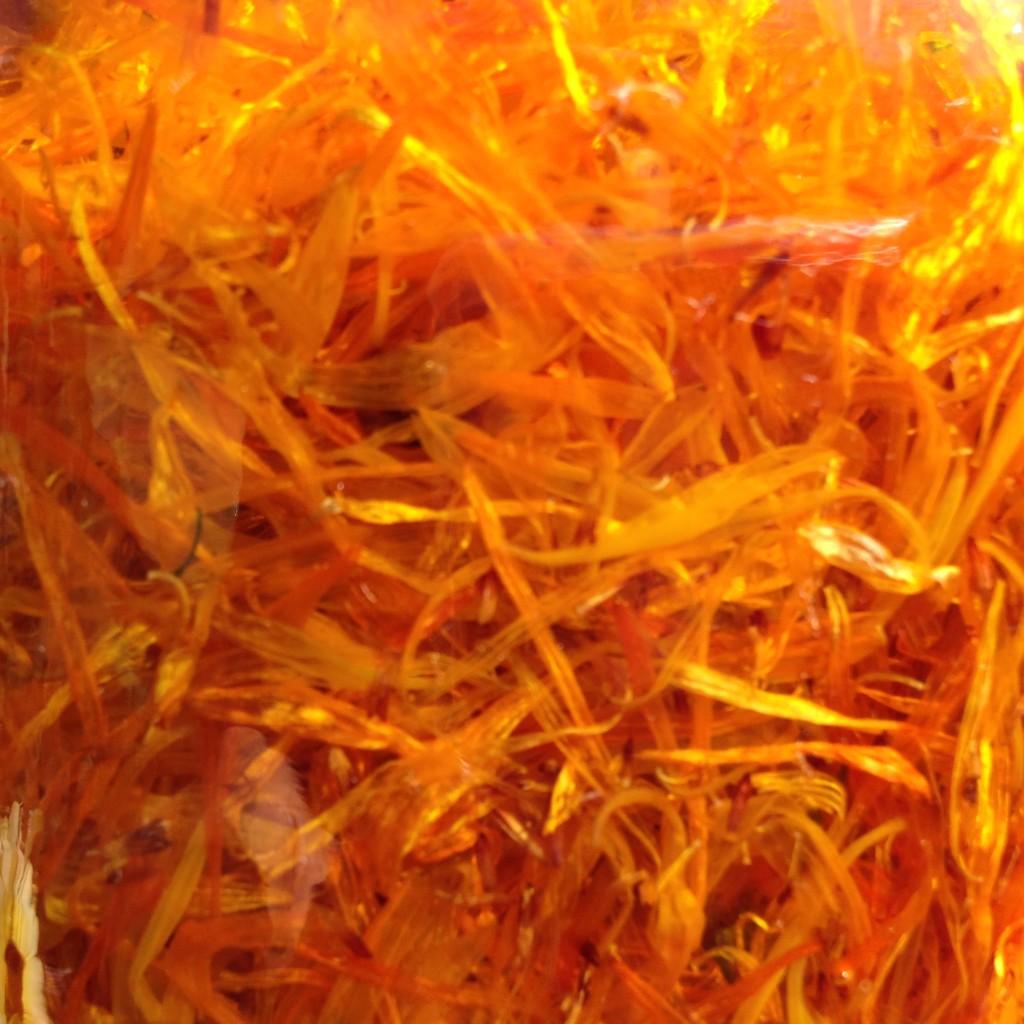A lovely row of Cottage Garden-ish Calendula, also known as the Pot Marigold.

Calendula is in the Daisy family and it is a useful plant in the Garden border and also in the kitchen. Flower petals can be added to salads or to soups and stews.
It is, in fact, sometimes known as “Poor Man’s Saffron” because of the cheery orange colour that it can lend to food preparations.
Calendula is very easy to grow (even considered somewhat weedy by certain, more sophisticated, Gardeners). It grows well in almost any location and is not very fussy about soil type and also needs little in the way of soil additives. The seeds are simply sown in the desired location after the last frost and very soon after lime green foliage is topped with pretty flower-heads.
Cheerful, sunny and generous – this annual can produce a fairly effortless and very large flower border of mixed oranges, yellows and even some bi-coloured blooms.
The blooms have many uses – they attract pollinators, become fetching garnishes for Summer salads, provide a long lasting and splashy show of multi-coloured flowers and after all that… they are also able to lend their petals to a healing Calendula oil infusion. Very Nice.
Picking a big basket of the Calendula flower-heads and then bringing them inside is about as close as we get to flower-arranging around here. It always reminds me of the lovely pictures of the abundant Marigold garlands that you see in Thailand and, I think, also in India…
So, Very, Pretty!
Calendula Oil
To make a useful jar of Calendula infused oil you simply remove the petals from a basket of Calendula blooms, using about a cup of petals for a cup of liquid oil. Olive oil will work well, as will Grapeseed or any nice salad oil but we like to use Sunflower oil. It seems a cheerful match with the bright oranges and yellows of the Calendula and it does not leave your skin smelling quite like a salad.
Let the Calendula petals wilt for a few days and then add them to a mason jar and top with the oil. Let this infusion steep for about six weeks, giving the jar a gentle shake every few days. Calendula oil can be infused much faster with a gentle heating but room temperature steeping is somewhat more simple (less dishes is always good).
After the oil has infused, strain out the petals and you will have produced a pretty, orange and very healing oil. This is a useful oil for dry or chapped skin and can be included in almost any salve recipe. Calendula oil works well to help heal eczema or dermatitis and also makes a gentle ingredient in rash creams for babies.
Isn’t that just the prettiest jar of flower petals?
Love the hard working little flowers.
5
